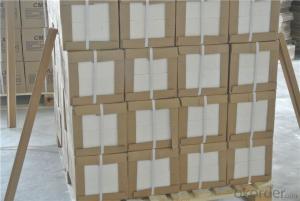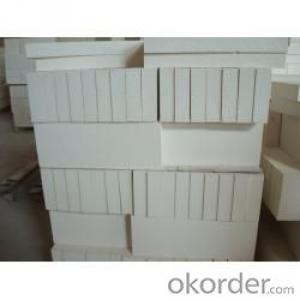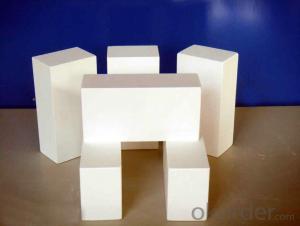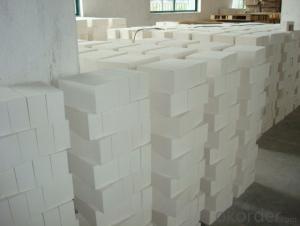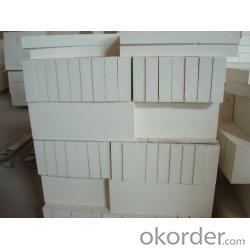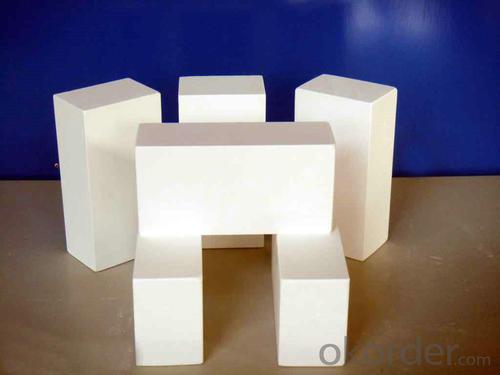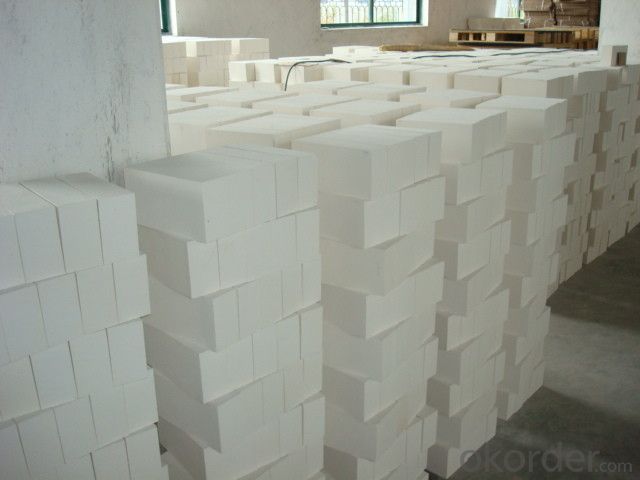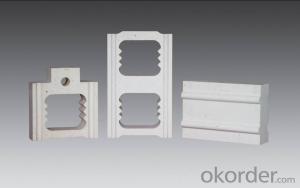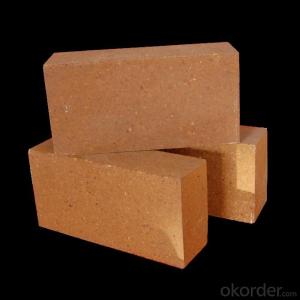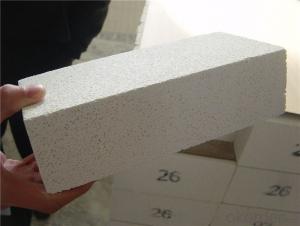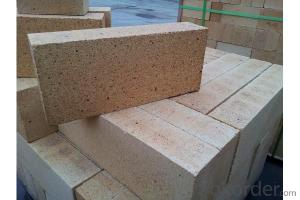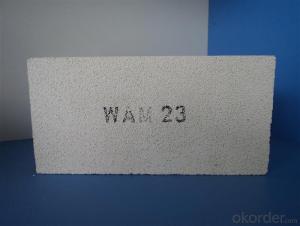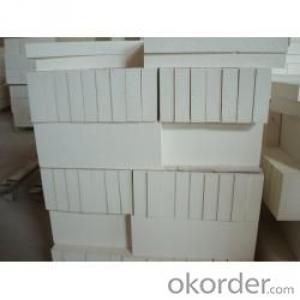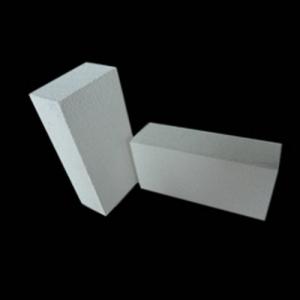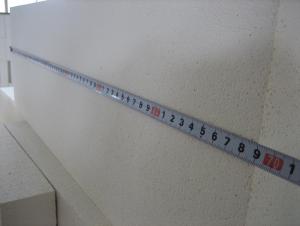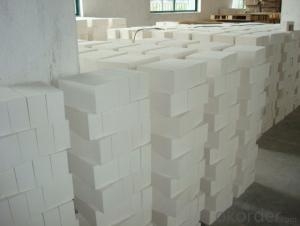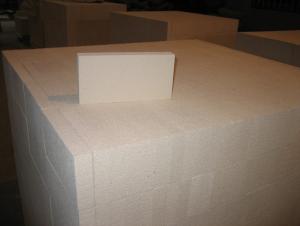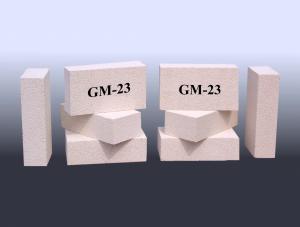Insulating Fire Brick - JM Mullite Thermal Storage Bricks Thermal Insulating Brick
- Loading Port:
- Tianjin
- Payment Terms:
- TT OR LC
- Min Order Qty:
- 2 m.t.
- Supply Capability:
- 1000 m.t./month
OKorder Service Pledge
OKorder Financial Service
You Might Also Like
Bubble Alumina Brick. We stock in both 2.5 & 3” sizes. We also carry double bump interlocking anchor styles. For use up to 1800C, these brick have excellent insulating properties as well as high hot strengths.
Insulating firebrick, we carry produces thirteen types of Insulating Fire Brick for use in applications from 2,000°F (1,093°C) to 3,200°F (1,760°C). Each type is formulated to meet specific thermal and physical requirements and after firing is machined to precise tolerances.
Made from high purity refractory clays and other ceramic raw materials, these insulating fire brick contain a carefully graded organic filler which is burned out during manufacture to give a uniform controlled pore structure.
Advantages of bubble alumina brick.
High Insulating Va
The high compressive strength of bubble alumina brick allows for self-supporting structures at elevated temperatures. Insulating fire brick are compatible with dense fire brick and add strength to the whole construction.
.
Strong
The high compressive strength of bubble alumina brick allows for self-supporting structures at elevated temperatures. Insulating fire brick are compatible with dense fire brick and add strength to the whole construction.
Low Heat Storage
Lower heat storage versus dense brick means reduced fuel costs in cyclically operated heating equipment.
Application
DJM 26 Light Weight Insulating fire brick are used for the lining of converter, alternating current arc furnace, direct Current arc furnace and the ladle slag line, etc.
Company Advantage
(1)Long Insulating Fire Brick manufacture history: 25 years manufacturer
(2)Advanced equipment
(3)Diversification of production standards: ISO ANSI FEPA JIS ASTM
Equipment
1 unit of Ceramic Abrasive (SG Abrasive) pilot production line
1 unit of high-end coated abrasives (abrasive cloth) production line
2 units of Boron Carbide production lines
Q1 What’s the transport method?
A1 FCL delivery goods with wooden pallet or wooden case by sea; If LCL delivery, must with wooden case; Sometimes need open top, flat rack or bulk cargo.
Q2 What’s the required payment term?
A2 Generally 30% TT as the prepayment, 70% TT before delivery. If need, 100% Irrevocable Letter of Credit or negotiation.
Q3 Which country are our products exported to?
A3 Apart from entire Chinese market, the US, Russia, Japan, Korea, Australia and some Southeast Asian Nations.
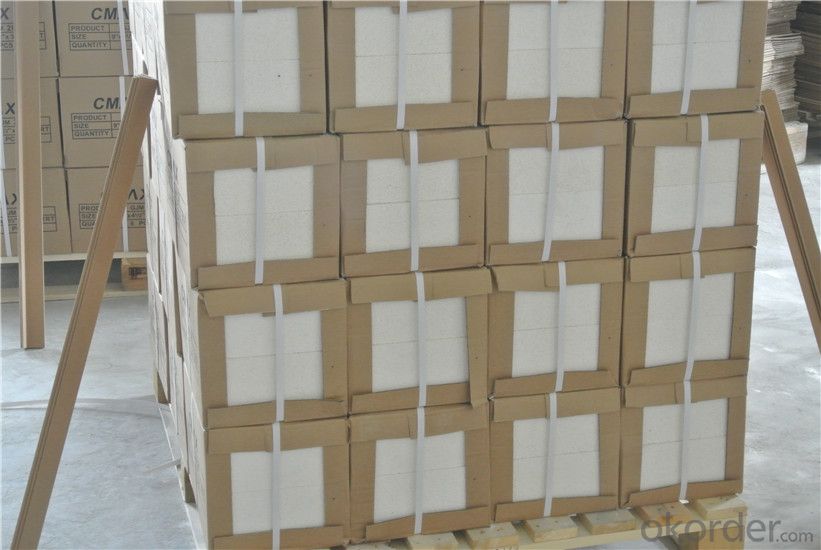
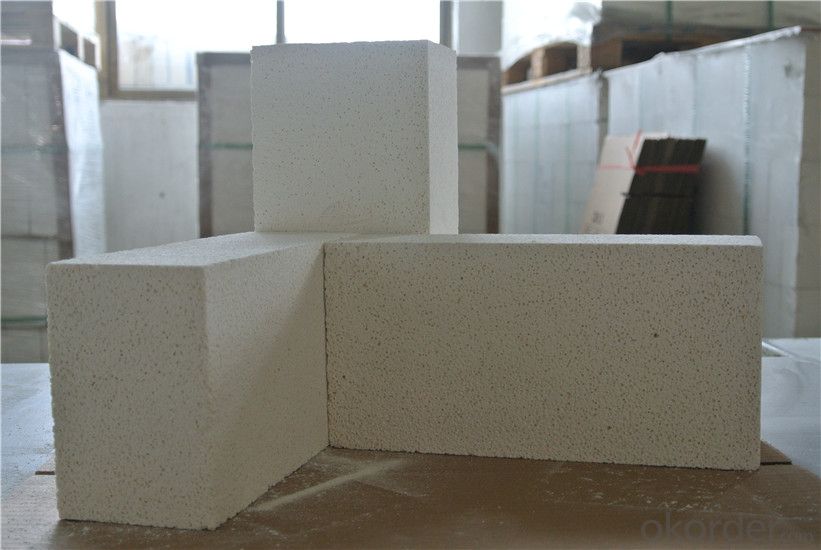
- Q: Can insulating fire bricks be used in the insulation of walls and roofs?
- No, insulating fire bricks are typically not used in the insulation of walls and roofs. They are primarily designed for high-temperature applications such as lining kilns, furnaces, and fireplaces. Other types of insulation materials such as fiberglass, foam, or cellulose are more commonly used for wall and roof insulation due to their better thermal properties and lower cost.
- Q: Can insulating fire bricks be used in high-temperature insulation boards?
- Indeed, high-temperature insulation boards can utilize insulating fire bricks for their thermal insulation needs. These bricks are specifically engineered to endure extreme temperatures while offering exceptional thermal insulation. They find widespread use in various applications demanding insulation under elevated temperatures, including kilns, furnaces, and fireplaces. By incorporating insulating fire bricks into high-temperature insulation boards, one can effectively reduce heat loss and uphold a consistent temperature. Nevertheless, it is crucial to assess the particular prerequisites of the application and verify the compatibility of the insulating fire bricks with the insulation board material and installation technique.
- Q: What are the specifications of high strength diatomite insulating bricks?
- In view of the old and new concrete, steel structure, solid brick wall, hollow brick wall, compressed air brick wall and different brick wall, combined with the company installation patent method, it is suitable for the construction and installation of various types of wall. At the same time, it is also suitable for old house reconstruction. It has excellent outdoor weather resistance, color retention, alkali resistance, water resistance, scrub resistance, crack resistance, temperature resistance, waterproof, wear-resistant, collision resistant, and durable film, adhesion, and excellent anti mildew effect.
- Q: Do insulating fire bricks require any special storage conditions?
- Yes, insulating fire bricks require special storage conditions. They should be stored in a dry and well-ventilated area to prevent moisture absorption, which could lead to cracking or damage when exposed to high temperatures. Additionally, they should be protected from direct sunlight and extreme temperature variations to maintain their structural integrity.
- Q: Do insulating fire bricks have a high insulating capacity?
- Yes, insulating fire bricks have a high insulating capacity. These bricks are specifically designed to have excellent thermal insulation properties, making them highly effective at preventing heat transfer. They are made from lightweight materials such as ceramic fibers, which have low thermal conductivity. This means that insulating fire bricks can effectively trap and retain heat, preventing it from escaping and keeping the surrounding area insulated. Due to their high insulating capacity, these bricks are commonly used in applications where heat retention and energy efficiency are important, such as in furnaces, kilns, and fireplaces.
- Q: Can insulating fire bricks withstand thermal shock?
- Yes, insulating fire bricks are designed to withstand thermal shock due to their high temperature resistance and low thermal conductivity. They are made to endure rapid changes in temperature without cracking or breaking, making them suitable for various high-temperature applications.
- Q: Can insulating fire bricks be used to line industrial boilers?
- Yes, insulating fire bricks can be used to line industrial boilers. Insulating fire bricks are designed to withstand high temperatures and provide excellent insulation properties. They are commonly used in industrial applications, including lining furnaces, kilns, and boilers, to reduce heat loss and improve energy efficiency.
- Q: Do insulating fire bricks have a high thermal shock resistance?
- Yes, insulating fire bricks generally have a high thermal shock resistance. They are designed to withstand rapid temperature changes without cracking or breaking, making them suitable for applications where thermal cycling occurs frequently.
- Q: Can insulating fire bricks be used in chimney construction?
- Indeed, insulating fire bricks have the capability to be utilized in the construction of chimneys. These bricks are specifically designed to possess a low thermal conductivity, which ultimately leads to their effectiveness in minimizing heat transfer. As a result, they prove themselves suitable for chimney construction as they aid in maintaining cooler chimney walls and preventing excessive heat from being transmitted to the surrounding structures. Moreover, apart from their lightweight nature, insulating fire bricks possess commendable insulation properties, thereby making their handling and installation in chimney construction a much simpler task. However, it is imperative to acknowledge that in order to comply with safety regulations and ensure proper chimney construction, it is crucial to utilize insulating fire bricks in conjunction with other fire-resistant materials.
- Q: Do insulating fire bricks require any special installation techniques?
- Yes, insulating fire bricks require special installation techniques. These bricks are typically lightweight and have low thermal conductivity, making them highly effective in insulating applications. To ensure proper installation, it is important to follow the manufacturer's guidelines and use appropriate tools, such as refractory mortar or adhesive, to securely bond the bricks together. Additionally, proper curing and drying procedures should be followed to avoid any potential cracking or damage during the installation process.
Send your message to us
Insulating Fire Brick - JM Mullite Thermal Storage Bricks Thermal Insulating Brick
- Loading Port:
- Tianjin
- Payment Terms:
- TT OR LC
- Min Order Qty:
- 2 m.t.
- Supply Capability:
- 1000 m.t./month
OKorder Service Pledge
OKorder Financial Service
Similar products
Hot products
Hot Searches
Related keywords
